1. Dharti Aaba Janjatiya Gram Utkarsh Abhiyan
Prime Minister of India recently launched the Dharti Aaba Janjatiya Gram Utkarsh Abhiyan in Jharkhand with an outlay of around Rs 80,000 crore.
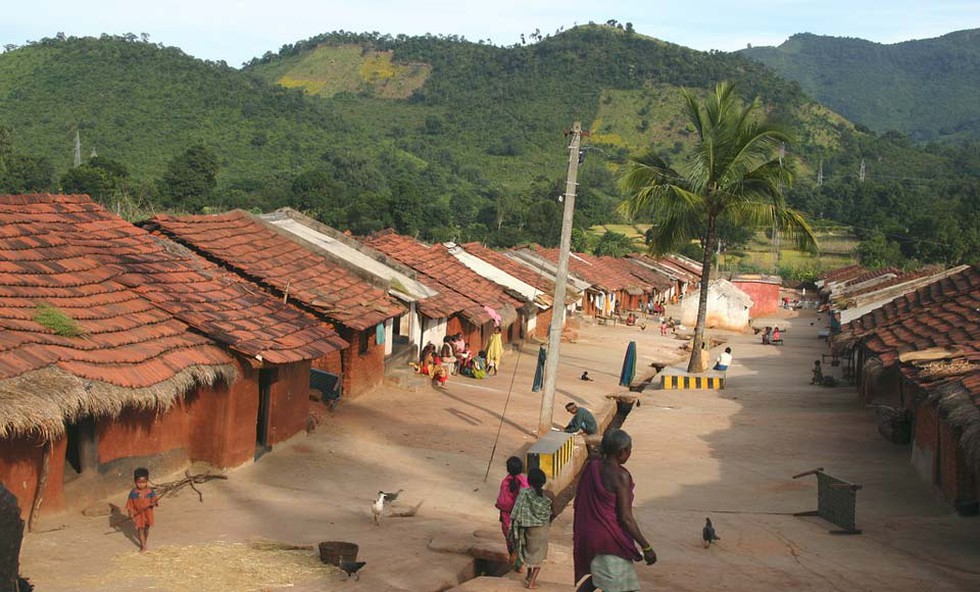
About Dharti Aaba Janjatiya Gram Utkarsh Abhiyan:
- It aims to foster holistic development in tribal villages, bringing transformative changes to the socio-economic landscape of the region.
- The Abhiyan will cover around 63,843 villages, benefiting more than 5 crore tribal people in 549 districts, and 2,911 blocks spread across all tribal majority villages and aspirational blocks in 30 States/UTs.
- It envisions saturation of critical gaps in social infrastructure, health, education, and livelihoodthrough 25 interventions implemented by 17-line ministries of Govt of India by convergence and outreach; and ensures holistic and sustainable development of tribal areas and communities.
- The scheme has a total outlay of Rs.79,156 crores (Central Share: Rs.56,333 crore and State Share: Rs. 22,823 crore).
- It has been planned based on the learning and success of Pradhan Mantri Janjati Adivasi Nyaya Maha Abhiyan (PM JANMAN), which was launched in November 2023.
- With a budget outlay of Rs. 24,104 crores, the PM-JANMAN focuses on the Particularly Vulnerable Tribal Groups (PVTG) population.
2. Key Facts about Sahara Desert
The Sahara Desert is undergoing a rare transformation as heavy rainfall brings unexpected greenery to its arid landscape.
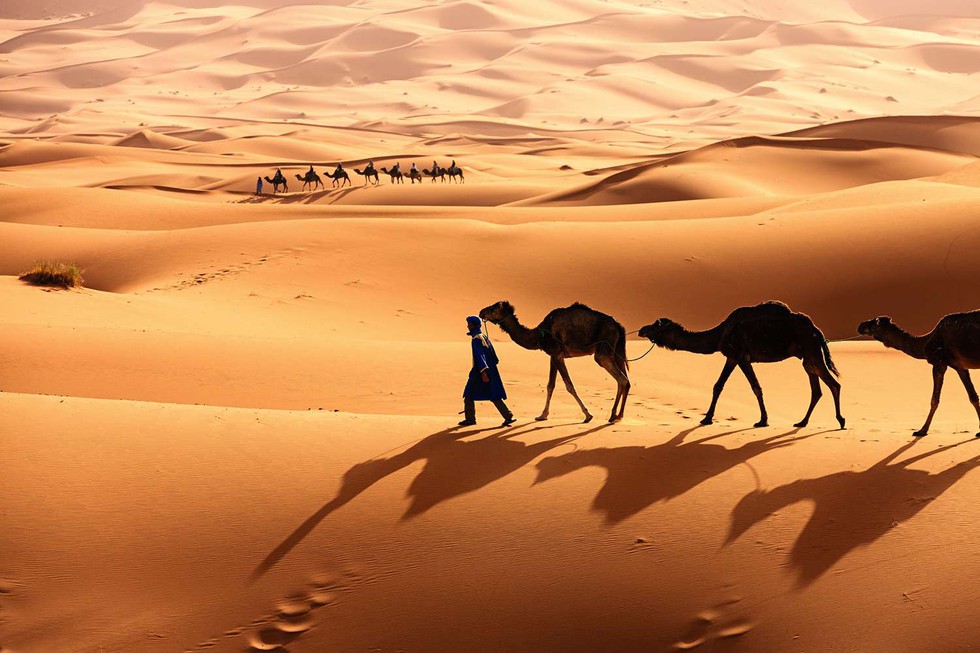
About Sahara Desert:
- The Sahara, located in Northern Africa, is the world's largest hot desertand the third most extensive desert after the polar deserts of Antarctica and the northern Arctic.
- It spans over 9,200,000 sq. km (8% of the earth’s land area).
- The Sahara Desert encompasses a major portion of North Africa, occupying about 31% of the entire African continent.
- The countries within the Sahara Desert are Morocco, Mali, Mauritania, Egypt, Libya, Algeria, Chad, the Niger Republic, some parts of Sudan, a small portion of Nigeria, and a small part of Burkina Faso.
- The desert is bounded by the Mediterranean Seaand the Atlas Mountains on the northern side; the Red Sea on the eastern side; the Atlantic Ocean on the western side and the semiarid Sahel region on the southern side.
- The majority of the Sahara is made up of barren, rocky plateaus, as well as salt flats, sand dunes, mountains, and dry valleys.
- The large Nile and Niger rivers,along with the seasonal lakes and aquifers, provide the main source of water for the major desert oases.
- The highest peak in the Sahara is Emi Koussi (3,415m), a volcano located in the Tibesti Mountains, Chad.
- The Sahel region serves as a transition zone between the hot desert in the north and the humid savannas of Sub-Saharan Africain the south.
3. What is the Monetary Policy Committee (MPC)?
The Central government recently appointed new monetary policy committee members with immediate effect.
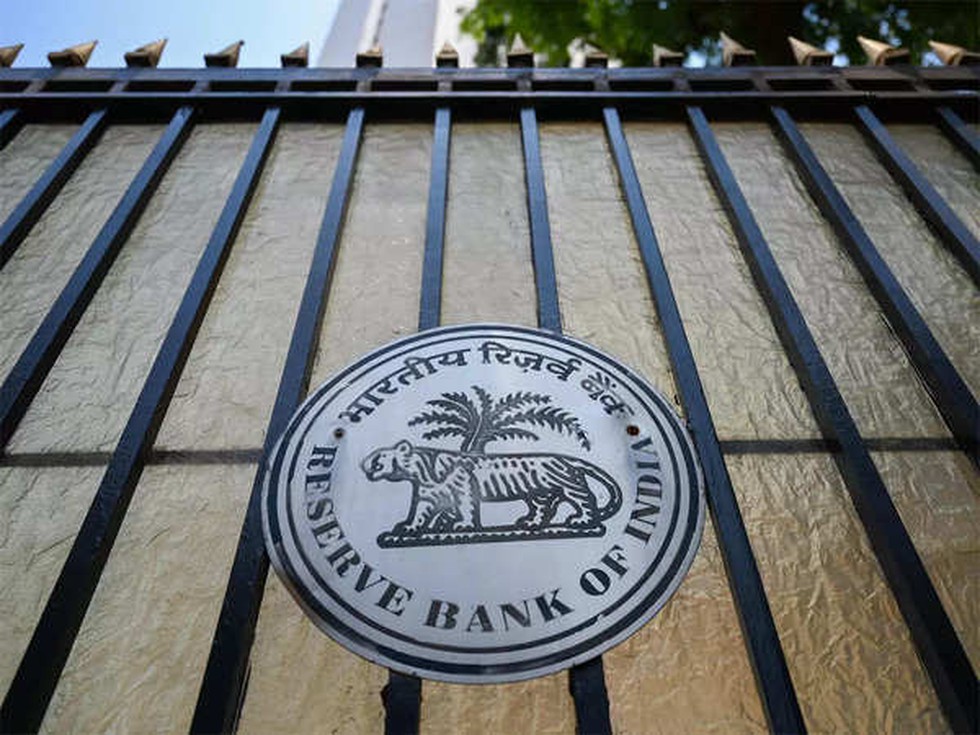
About Monetary Policy Committee (MPC):
- The MPC was set up after a Memorandum of Understanding between the government and the RBI about the conduct of the new inflation-targeting monetary policy framework.
- The Reserve Bank of India Act, 1934 (RBI Act) has been amended by the Finance Act, 2016 to provide for a statutory and institutionalized framework for an MPC.
- Under Section 45ZB of the amended RBI Act, 1934, the central government is empowered to constitute a six-member MPC.
- Function: The MPC is entrusted with the task of fixing the benchmark policy rate (repo rate) required to contain inflation within the specified target level.
- The MPC replaced the previous arrangement of the Technical Advisory Committee.
- Composition:
- MPC will have six members: the RBI Governor (Chairperson),the RBI Deputy Governor in charge of monetary policy, one official nominated by the RBI Board, and the remaining three members will represent the Government of India.
- The external members hold office for a period of four years.
- The quorumfor a meeting shall be four Members, at least one of whom shall be the Governor and, in his absence, the Deputy Governor, who is a Member of the MPC.
- The MPC makes decisions based on a majority vote.In case of a tie, the RBI governor will have the second or casting vote.
- The decision of the MPC would be binding on the RBI.
- RBI’s Monetary Policy Department (MPD) assists the MPC in formulating the monetary policy.
4. Lake Prespa
According to experts, of the 450 hectares of Little Prespa Lake in Albania, at least 430 hectares have been transformed into swamps or dried up.
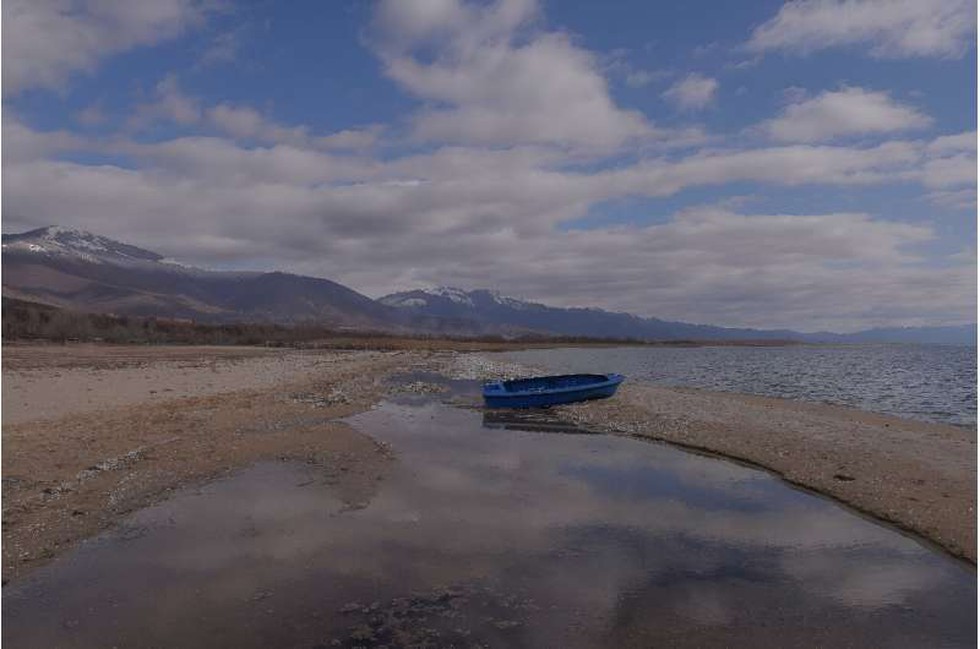
About Lake Prespa:
- It is one of the oldest tectonic lakes in Europe, and also the highest tectonic lake on the Balkan Peninsula.
- It lies at the junction of three major geological masses: a granite massif on the East, a karstic massif belonging to Galicica on the West, and the Suva Gora on the South.
- The region is famous for having rocks from the oldest Paleozoic form to sediments belonging to the young Neogene era.
- It is made up of the Great Prespa Lake (Albania, Greece and the Republic of Macedonia) and Small Prespa Lake.
- The majority of Little Prespa Lake, also known as Small Lake Prespa, sits in Greek territory, with just its southern tip crossing into Albania.
- Rising temperatures and increasingly mild winters with little snowfall and a scarcity of precipitation have battered the lake.
5. What is solar eclipse?
An annular solar eclipse was visible in parts of South America on October 2 while a partial solar eclipse was visible in parts of South America, Antarctica, North America, the Atlantic Ocean, and the Pacific Ocean.

About Solar Eclipse:
- It takes place when the Moon moves in the middle of the Earth and the Sun.
- The Moon blocks the light of the Sun, either fully or partially, which casts a huge shadow on some parts of the world.
- A solar eclipse is witnessed only during the new moon — when the Moon and Sun are aligned on the same side of Earth.
- A new moon occurs about 29.5 days because that is how long it takes the Moon to orbit Earth. It takes place only between two to five times annually.
- It is because the Moon does not orbit Earth in the same plane as the Earth orbits the Sun. In fact, the Moon is tilted by about five degrees with respect to Earth.
- As a result, most of the time when the Moon is in between the Sun and Earth, its shadow is either too high or too low to fall on the Earth.
- There are four different types of solar eclipses,
- Total Solar eclipse: It occurs when the Moon blocks the Sun entirely, the areas in the centre of the Moon’s shadow at the time witness a total solar eclipse.
- The sky darkens and people who are in the path of a total solar eclipse can get a glimpse of the Sun’s corona — the outer atmosphere — which is usually not visible due to the bright face of the Sun.
- Annular solar eclipse: It occurs when the Moon passes in front of the Sun but is at or near the farthest point from Earth.
- In this scenario, the Moon covers the Sun in such a way that only the periphery of the Sun remains visible — looking like a ring of fire.
- Partial solar eclipse: It takes place when the Moon blocks just a part of the Sun, giving it a crescent shape. During both partial and annular eclipses, the regions outside the area covered by the Moon’s umbra — the middle and the darkest part of the lunar shadow — will see a partial solar eclipse. Partial solar eclipse is the most common type of solar eclipse.
- Hybrid solar eclipse: It is the rarest type of solar eclipse and it is witnessed when an eclipse shifts between annular and total as the shadow of the Moon moves across the globe.
- In this case, some parts of the world see a total solar eclipse, while others observe an annular solar eclipse.
6. National Biodiversity Strategy and Action Plans Tracker
National Biodiversity Strategy and Action Plans (NBSAPs) Tracker revealed that only 10% of nations fulfil their biodiversity commitments ahead of COP16.
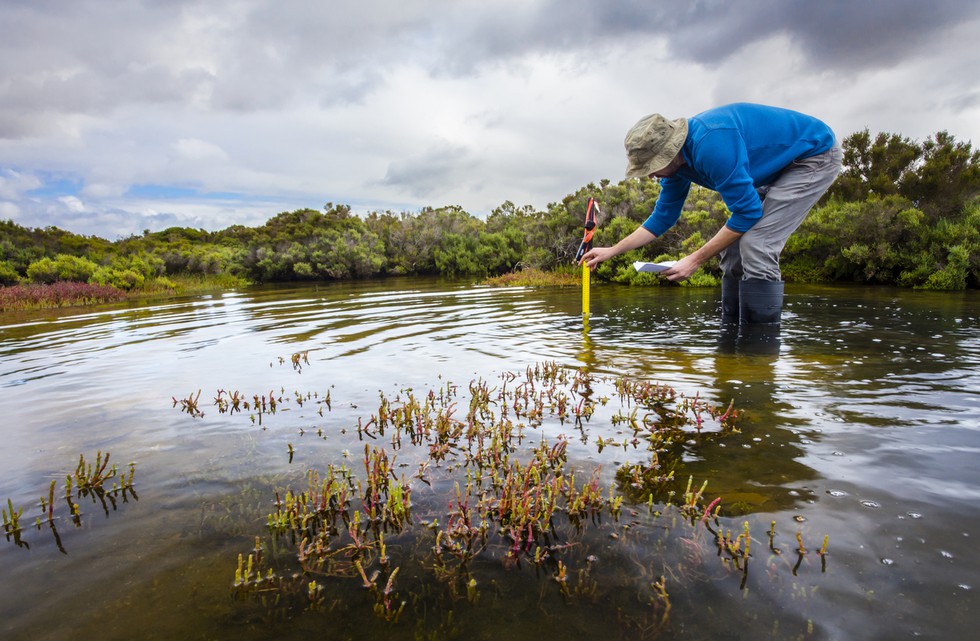
About National Biodiversity Strategy and Action Plans Tracker:
- It is a new tool developed by the World Wildlife Fund for Nature (WWF), which is monitoring the progress of countries in developing their NBSAPs that align with the goals of the Kunming-Montreal Global Biodiversity Framework (GBF).
- Aim: It aims to make biodiversity policies accessible to all stakeholders, ensuring transparency and accountability as countries prepare for COP16.
- NBSAPs are crucial blueprints for countries to outline their strategies to tackle biodiversity loss and meet international targets. These plans are aimed at ensuring that nations can mobilise action and funding to help restore ecosystems and safeguard wildlife.
Key facts about Kunming-Montreal Global Biodiversity Framework
- It was adopted during the 15th meeting of the Conference of the Parties, or COP15, to the UN Convention on Biological Diversity in December 2022.
- It aims to support the achievement of sustainable development goals and build on previous strategic plans.
- It sets a bold path towards global harmony with nature by 2050.
- In adopting the GBF, all parties committee to setting national targets to implement it.
- Goals and targets
- The GBF consists of 23 targets(set for 2030) and four global goals (set for 2050) to preserve biodiversity for current and future generations.
- The targets address reducing threats to biodiversity, meeting people's needs through sustainable use and benefit-sharing, and tools and solutions for implementation and mainstreaming.
Source : Only 10% of nations fulfil their biodiversity commitments ahead of COP16, reveals NBSAP tracker
7. Honey Badger
Recently, for the first time, a honey badger has been captured on camera in the Terai East Forest Division (TEFD) of Uttarakhand.
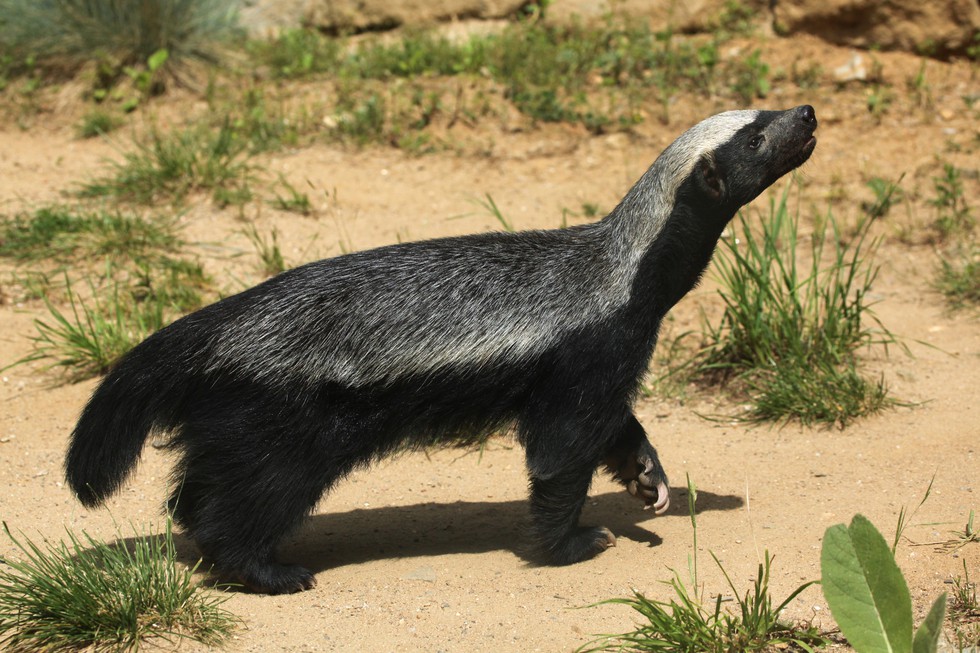
About Honey Badger:
- It is also known as the Ratel, are related to skunks, otters, ferrets, and other badgers.
- Honey badgers are omnivorous and nocturnal mammals that belong to the weasel family.
- These creatures are known for their powerful, curved claws, which they use to dig burrows for shelter. Their diet is diverse, consisting of small animals, fruit and honey.
- They are known for their solitary nature and their ability to twist and turn to escape predators.
- Distribution: They are found in parts of Africa and Asia.
- Also they have been recorded in a few other locations in India, such as Bannerghatta National Park in Karnataka, Chilika Lagoon in Odisha and Tadoba-Andhari Tiger Reserve in Maharashtra.
- Ecological Significance:
- They play a vital role in maintaining ecological balance by preying on smaller animals and pests, helping to control populations and protect crops.
- They contribute to nutrient cycling by enriching the soil through their diet and waste.
- They are important indicators of ecosystem health, ensuring a diverse and thriving environment for other species.
- Conservation status
- IUCN: Least Concern
- Wildlife (Protection) Act of 1972: Schedule I
8. SARTHIE 1.0
Recently, the Department of Social Justice and Empowerment (DoSJE), Government of India, and the National Legal Services Authority (NALSA) launched the SARTHIE 1.0.
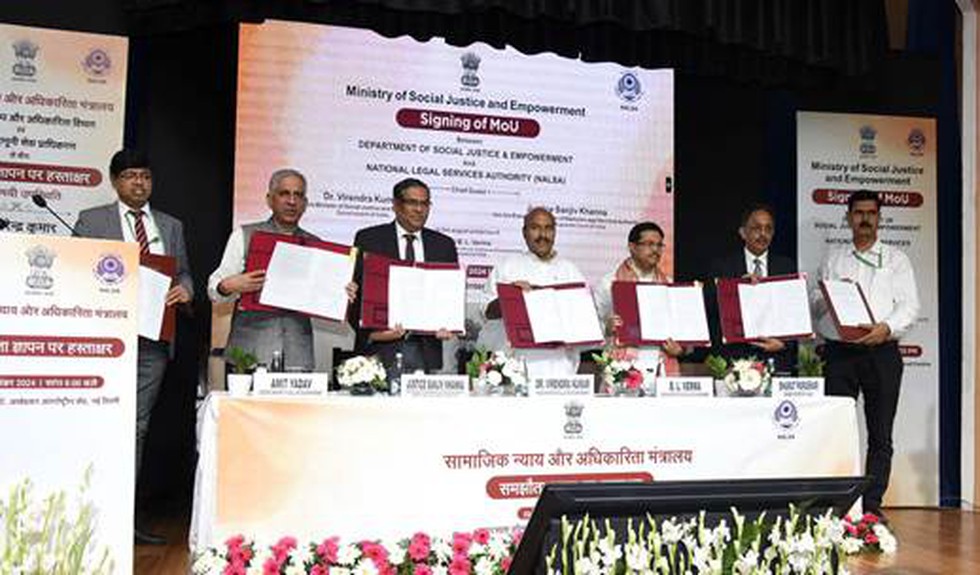
About SARTHIE 1.0:
- It is an initiative intended to empower disadvantaged communities, including Scheduled Castes (SCs), Other Backward Classes (OBCs), Senior Citizens, Transgender Persons, Victims of Alcoholism and Substance Abuse, persons engaged in the act of Begging, Denotified and Nomadic Tribes and more.
- It aligns with the United Nations 2030 Agenda for Sustainable Development, particularly the goals focused on eradicating poverty, reducing inequality, and promoting social protection policies that ensure greater equality for all.
- The collaboration aims to bridge the awareness gap and provide legal assistance to ensure the effective implementation of social welfare programmes.
- It offers a synergy between the executive and the judiciary and ensures that social justice is further strengthened.
Key facts about NALSA
- It was constituted under the Legal Services Authorities Act of 1987.
- Mandate: It has a mandate to provide legal aid to disadvantaged groups and spread legal literacy.
- The Chief Justice of India is the patron-in-chief of NALSA, while the second senior-most judge of the Supreme Court of India is the Executive Chairman.
- It is housed at the Supreme Court of India, New Delhi.
- In every State, a State Legal Services Authority and in every High Court, a High Court Legal Services Committee has been constituted.
9. What is Sickle Cell Disease (SCD)?
The pharmaceutical giant Pfizer recently announced it would voluntarily withdraw its sickle cell disease therapy, Oxbryta, from worldwide markets, owing to the emergence of clinical data that links “fatal events” to the drug.
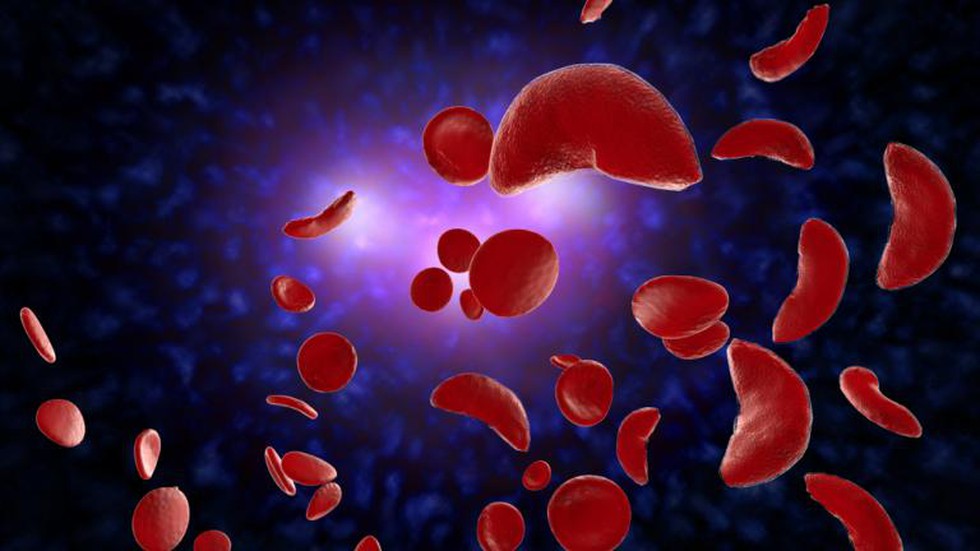
About Sickle Cell Disease (SCD):
- It is an inherited blood disorder.
- It is marked by flawed hemoglobin.
- Hemoglobin is the molecule in Red Blood Cells (RBCs) that carries oxygen to the tissues of the body.
- How does it affect blood flow?
- Normally, RBCs are disc-shaped and flexible enough to move easily through the blood vessels.
- People with SCD have atypical hemoglobin molecules called hemoglobin S, which can distort RBCs into a sickle, or crescent, shape.
- These sickled RBCs do not bend or move easilyand can block blood flow to the rest of the body.
- SCD interferes with the delivery of oxygen to the tissues.
- What causes it?
-
- The cause of SCD is a defective gene, called a sickle cell gene.
- A person will be born with SCD only if two genes are inherited—one from the mother and one from the father.
- Symptoms:
- Early stage: Extreme tiredness or fussiness from anemia, painfully swollen hands and feet, and jaundice.
- Later stage: Severe pain, anemia, organ damage, and infections.
- Treatments:
- A bone marrow transplant(stem cell transplant) can cure SCD.
- However, some treatments can help relieve symptoms, lessen complications, and prolong life.
- Gene therapyis also being explored as another potential cure.
- The UK recently became the first country to approve gene therapy treatment for SCD.
Source : Healthy Returns: Pfizer pulls sickle cell disease drug from markets – here’s why it matters
10. What are Manatees?
Biologists, along with partners and the public, have been responding to reports of stranded manatees in Florida, the United States after Hurricane Helene struck Florida recently.
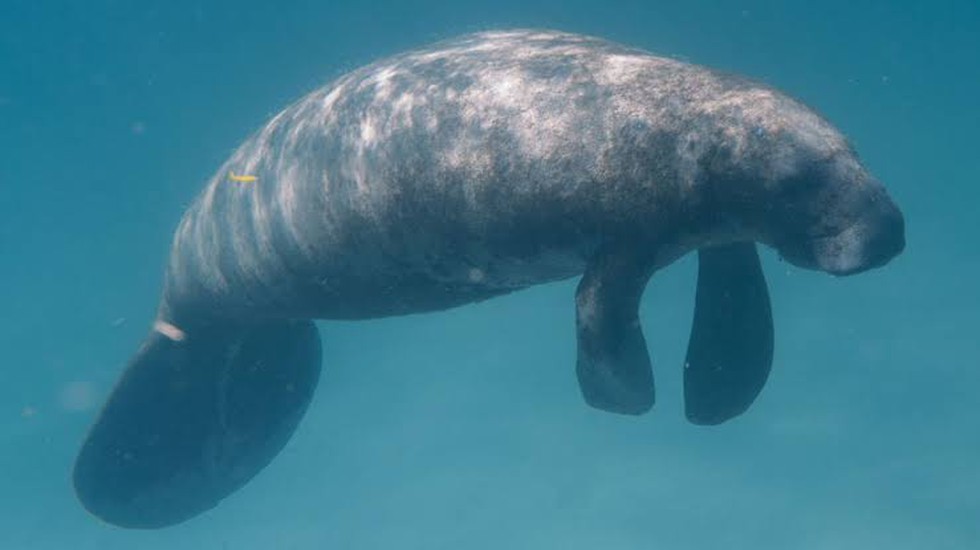
About Manatees:
• Manatees are aquatic mammals that belong to a group of animals called Sirenia. This group also contains dugongs.
• Dugongs and manatees are very similar in appearance and behavior, but there is one key difference: their tails.
o Manatees have paddle-shaped tails, and dugongs have fluked tails, giving them a whale-like appearance.
• Habitat: Manatees inhabit shallow, marshy coastal areas and rivers.
• There are three species, or types, of manatee.
o The Amazonian manatee lives in the Amazon Riverand in fresh water in South America. This species is only found in freshwater.
o The African manatee lives in tropical West Africa.
o The Caribbean manatee is found in Florida and the West Indies.
• Features:
o Adult manatees may reach a length of 15 feet (4.6 meters) and a weight of 1,660 kilograms.
o Dull gray, blackish, or brown in colour, all three manatee species have stout tapered bodies ending in a flat rounded tail used for forward propulsion.
o The forelimbs are modified into flippers; there are no hind limbs.
o In order to breathe, they must swim to the water’s surface for air.
o Lifespan: 50 to 60 years
o They are herbivores. They graze along the seabed and eat seagrasses, giving them the nickname “sea cow”.
o They spend up to eight hours a day grazing and can consume 4 to 9 percent of their body weight in aquatic vegetation daily.
o Apart from mothers and their young, or males following a receptive female, manatees are generally solitary animals.
• Conservation Status: All three manatee species are listed as ‘Vulnerable’ by the IUCN’s Red List of Threatened Species.


























































































































































.png)
.png)
.png)
.png)
.png)


.png)
.png)
.png)





.png)
.png)






.png)
.png)
.png)
.png)
.png)
.png)
.png)
.png)
.png)

.png)







.png)
.png)


.png)
.png)
.png)


.png)

.png)
.png)





.jpg)

.png)
.png)


.png)

.png)
.png)
.png)

.jpg)

.jpg)


.png)

.png)
.png)
.png)
.png)
.png)
.png)
.png)
.png)
.png)
.png)




.png)

.png)





.png)
.png)
.png)
.png)
.png)
.png)
.png)
.png)
.png)
.png)
.jpg)
.jpg)

.png)
.png)
.png)
.png)
.png)
.png)
.png)
.png)
.png)
.png)
.png)
.png)
.png)
.png)
.png)
.png)
.png)
.png)
.png)
.png)
.png)
.png)



.png)
.png)

.jpg)
.jpg)


.jpg)
.jpg)
.jpg)
.jpg)
.jpg)

.jpg)








.jpg)
.jpg)
.jpg)
.jpg)
.jpg)

















.jpg)
.jpg)







.jpg)


















.jpg)
.jpg)






























































































.jpg)
.jpg)


























.jpg)

.jpg)










.jpg)








.jpg)




.jpg)










.jpg)


















.jpg)












































.jpg)














.jpg)
.jpg)
.jpg)





.jpg)

.jpg)
.jpg)





































































.jpg)


































.jpg)
.jpg)
















































.jpg)












.jpg)


.jpg)




.jpg)
.jpg)
.jpg)

.jpg)
.jpg)
.jpg)
.jpg)

.jpg)
.jpg)
.jpg)

.jpg)
.jpg)
.jpg)
.jpg)
.jpg)
.jpg)
.jpg)
.jpg)

.jpg)


.jpg)
.jpg)
.jpg)
.jpg)
.jpg)
.jpg)
.jpg)
.jpg)
.jpg)
.jpg)











.jpg)
.jpg)





.jpg)
.jpg)
.jpg)
























.jpg)
























.jpg)









.jpg)
.jpg)







.jpg)
.jpg)









































.jpg)
.jpg)
.jpg)
.jpg)
.jpg)

.jpg)
.jpg)
.jpg)
.jpg)
.jpg)


.jpg)
.jpg)
.jpg)
.jpg)
.jpg)

.jpg)
.jpg)
.jpg)
.jpg)
.jpg)
.jpg)
.jpg)
.jpg)
.jpg)
.jpg)
.png)

.png)
.png)

.png)
.png)
.png)
.png)


.jpg)
.jpg)

.jpg)
.jpg)
.jpg)

.png)
.png)
.png)
.png)
.png)
.png)
.png)

.png)
.png)
.png)
.png)
.png)
.png)
.png)
.png)
.png)
.png)





































































-min.png)



.png)




.png)








































